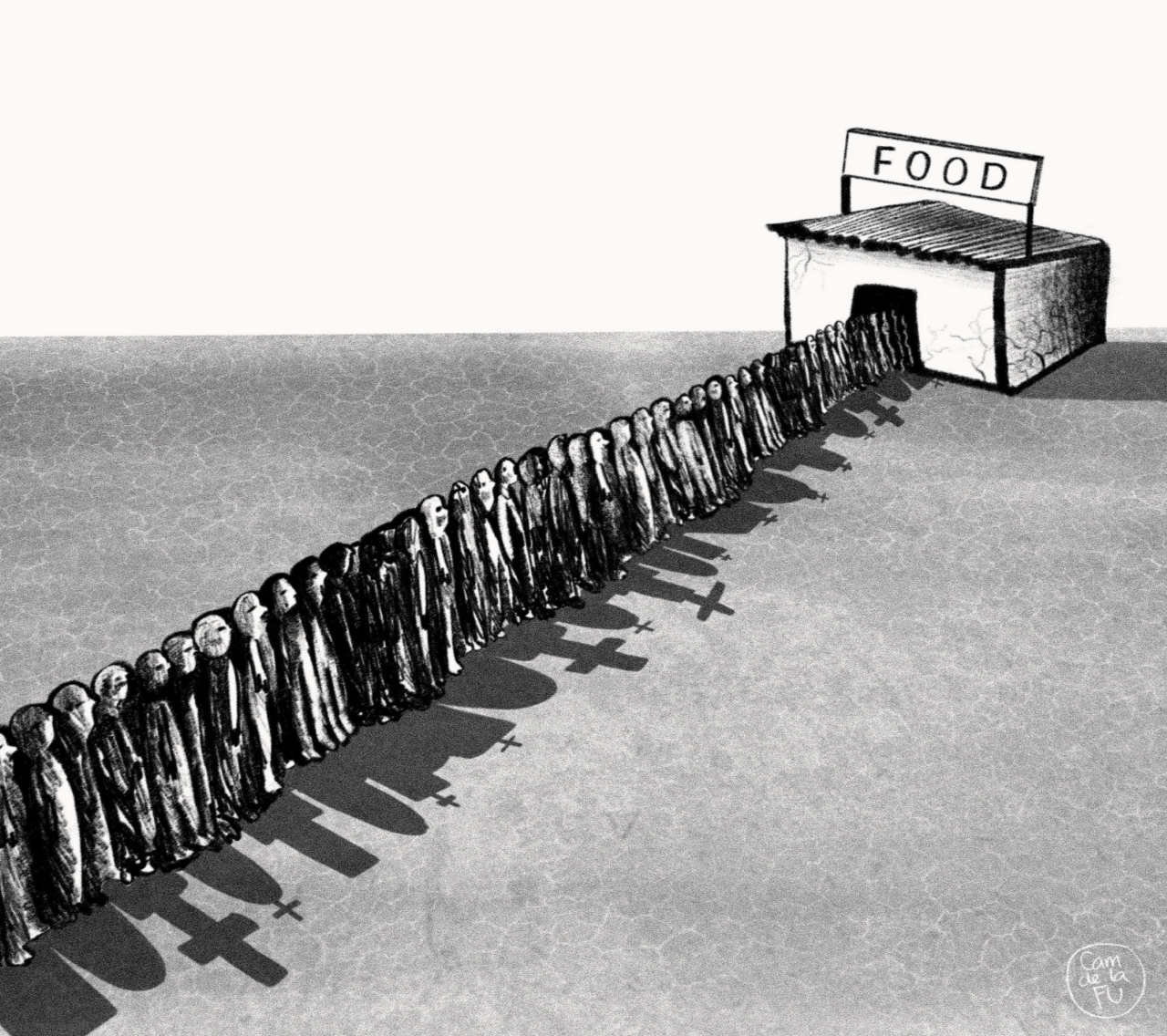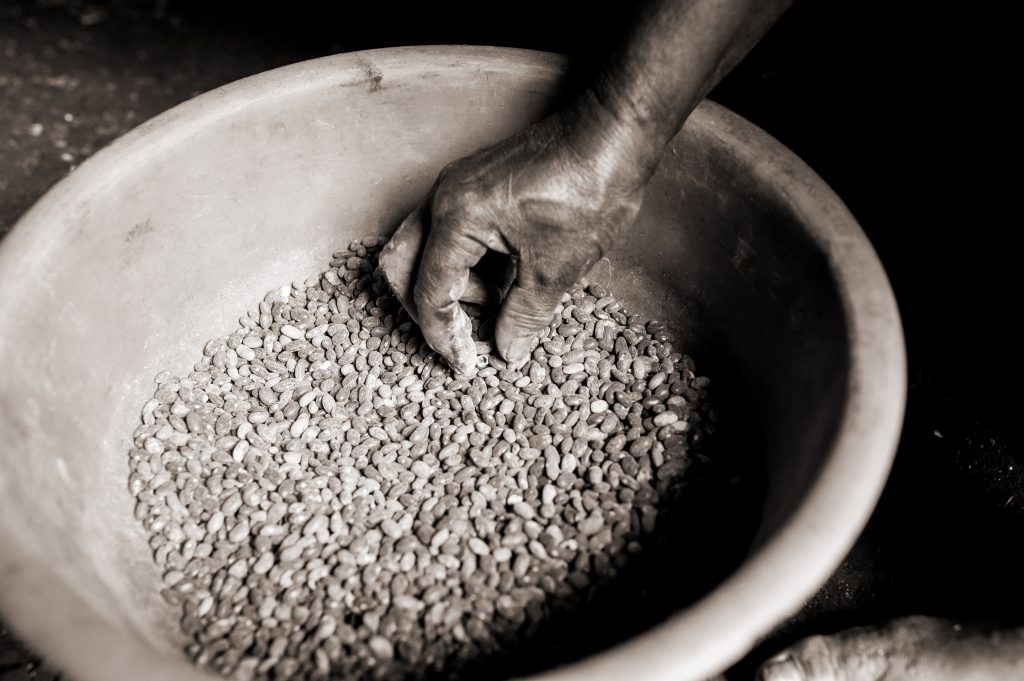Last week’s declaration of famine in South Sudan was the first such declaration by the United Nations and associated agencies for six years. It’s an important step, for several reasons. Crying ‘famine!’ is a political act, intended to impel action. This will be a test case for whether it works.
Until 2010, when the Integrated Food Security Phase Classification (IPC scale) was established by United Nations and other international humanitarian agencies including USAID, there were no agreed criteria for identifying when a food emergency crossed the threshold into outright famine. This was a problem. A rookie aid worker or journalist, a politically partisan advocate—or a team of seasoned nutritionists and humanitarian professionals—could use the word ‘famine’ as they wished, and policymakers wouldn’t know what to make of their claims. Given that every famine in modern times is the outcome of political decisions—in the country concerned and increasingly by global powers—it was important to have a technocratic, non-political procedure for making the call. Hence the routine country-by-country process of aggregating data on malnutrition, child mortality, and a host of socio-economic indicators, which could then be applied to a five-level scale to ascertain food security, with the worst level (five) being ‘famine’.
Until this week the only occasion that famine had been declared was in Somalia in 2011. That instance showed how the technical process could work to achieve a political goal. The technical process was compiling and analyzing the malnutrition, mortality and food security data. The political goal was to press the United States administration to find a workaround for the provisions of the PATRIOT Act that were stymieing international humanitarian efforts in that country, making aid workers fear prosecution if any of their assistance fell into the hands of the terrorist-listed insurgent group Al-Shabaab, or if they were seen negotiating with a potential Al-Shabaab member to bring food to the hungry. The UN declaration of famine achieved its goal—but tragically too late for 250,000 Somali children who died.
The declaration of famine in South Sudan serves a similar purpose. There was likely a famine in that benighted country last year, but there were technical and definitional questions about the data. Were there enough nutrition surveys to be able to generalize to the wider population? Should people who drowned in rivers and swamps, running away from massacres or seeing food, be included in the mortality rates? And there was a government representative on the IPC committee, who didn’t want to see famine declared, knowing well that his government and army were the main culprits for the disaster. So last year, the international agencies stopped short of declaring famine—they used the term ‘humanitarian emergency’ (IPC phase four) but added an exclamation point to indicate that, without ongoing humanitarian aid, there would indeed be famine.
Today they have had no such qualms: famine rates are indisputable in several localities and famine is looming in others. Five million people—half of all South Sudanese—face food crisis. We should of course parse these figures carefully and avoid the unseemly auction of starvation numbers. The population suffering famine (currently 200,000 or so) is not the same as the number who will die. A rule of thumb is to divide the number affected in this way by four, to get the number of children under five. Then consider that in a famine, child mortality rates could reach 20 or 30 percent.
The famine in South Sudan is the direct result of the way in which the civil war was fought after 2013 and the way in which it subsequently mutated into a generalized multi-sided conflict, with a complete degeneration of governance, and rampant destruction and looting throughout wide swathes of the country. (Remarkably, in talking to the press, it is still necessary to emphasize that it’s a man-made famine, as though a famine that wasn’t the product of political decision were the exception, not the rule.)
The immediate tasks are to provide humanitarian assistance and to bring an end to the fighting. These are not easy tasks. The threat of famine will be reduced only when there is political stability in South Sudan. Declaring ‘famine’ is a political act—backed by indisputable, serious data—that indicates that country’s political and moral decay. It is a call to action, and a warning to the South Sudanese political authorities that their cooperation is demanded.
The declaration of famine in South Sudan has wider significance too. In mentioning that it’s the first declaration of famine for six years, the UN overlooks the fact that the last famine before Somalia that killed a quarter of a million people was in Korea in 1996-97. Famine was becoming rare, to the extent that great famines, which kill a hundred thousand or more, were vanishing entirely. Now, there are signs that famine may be returning.
The Famine Early Warning Systems Network (FEWSNET) gave serious warnings about three other cases: northern Nigeria, Somalia and Yemen. The overall numbers of people in need of humanitarian assistance has risen from 45 million in 2015 to 70 million today. After 25 years in which these numbers were on a steady, if bumpy, downward trend, this is a disturbing reversal.
Last month, FEWSNET reported that famine probably occurred in parts of north-eastern Nigeria in the middle of 2016 and may be occurring in certain locations even today. The stricken localities were places caught in the Boko Haram insurgency, where economic activities had collapsed. Last year, precisely because they were cut off from aid workers, it was remarkably difficult to obtain a reliable reading of nutrition and mortality levels, and so there was no official declaration of famine. But of course it is precisely in these kinds of places that starvation is most likely to occur.
In Somalia, there is a widespread food crisis and FEWSNET has sounded the warning that there could be a famine later in the year, if nothing is done. This crisis is the product of a compound shock: successive crop failures in a weakened economy, scarcely recovered from the 2011 famine, with substantial populations unreachable by relief agencies.
The biggest test of the international famine relief system is Yemen. When the Saudi Arabia-led coalition went to war against the Houthi forces in Yemen in 2015, they likely expected a short, victorious war. Central to their strategy has been economic warfare: a near-total blockade and the destruction of infrastructure including roads, markets and the port of Hudaidah. In a poor country dependent upon food imports, these are faminogenic acts—but there is no international law that prohibits them, and the U.S. has been ready to play its part in enforcing the naval blockade and protecting the Saudis and Emiratis from international censure. United Nations humanitarian officials have been frustrated, not only by their lack of access, but the pressure placed on them to remain silent. Last month’s statement that up to ten million Yemenis face food crisis, which could descend into famine, was a remarkably brave and candid admission.
The IPC classification of Yemen as a humanitarian crisis shows both the strengths and weaknesses of the system of assessing famine. The strength is that the process of assessment is unimpeachably technical and non-political. A technical weakness is that the IPC scale is based on severity (how bad things are in any particular locality) rather than magnitude (the total number affected). Compared to South Sudan and north-eastern Nigeria, Yemen is a crisis of bigger magnitude, though its worst-hit places are probably less severe.
A political weakness is that crying ‘famine’ or ‘humanitarian crisis’ does not specify the causes of the crisis, and UN staff members who make the call are constrained in what they can say. The final paragraph of the January alert on Yemen from the Famine Early Warning Systems Network (FEWSNET) reads:
‘To mitigate severe, ongoing food insecurity and prevent Famine over the coming year, the international community and local actors must protect the ability of private traders to import staple food. In addition, more resources are needed to support the continuation and expansion of humanitarian response. Finally, continued access to conflict zones for traders and humanitarian actors is essential to ensure that food and assistance that reaches Yemen can move from points of entry to local communities.’
This can readily be decoded: the primary cause of the food crisis is the collapse of the market, and this is due to the blockade by the Gulf Cooperation Council countries (Saudi Arabia and the United Arab Emirates) supported by the U.S. and other western powers. The alert does not refer to UN Security Council resolution 2216 of April 2015, which imposed a de facto economic embargo on the Houthi-controlled areas of Yemen, but this indeed is a major contributor to the imminent famine, and needs urgently to be revised so as to allow not only far greater humanitarian access, but also a revival of private sector food imports and the national food market.
Failing political action, the Yemen crisis may signal the return of major famines to our world, reversing one of the greatest, unacknowledged triumphs of the last generation.


